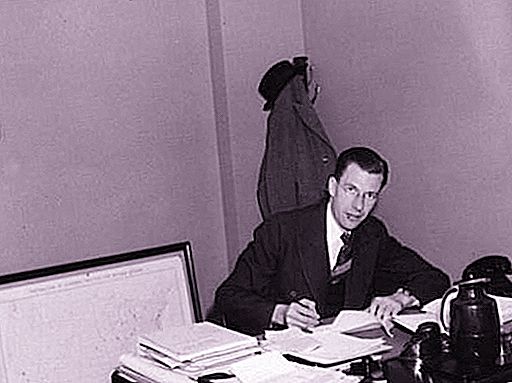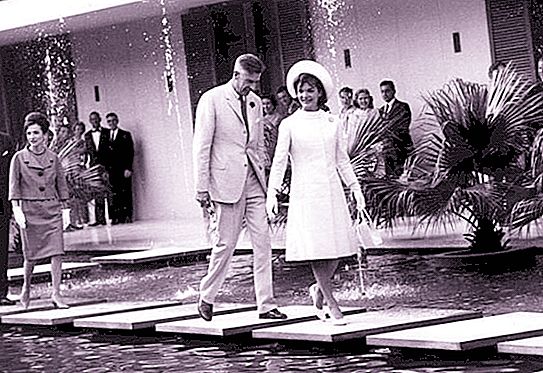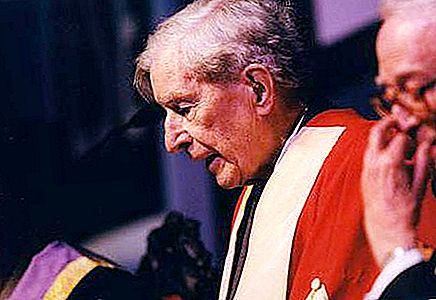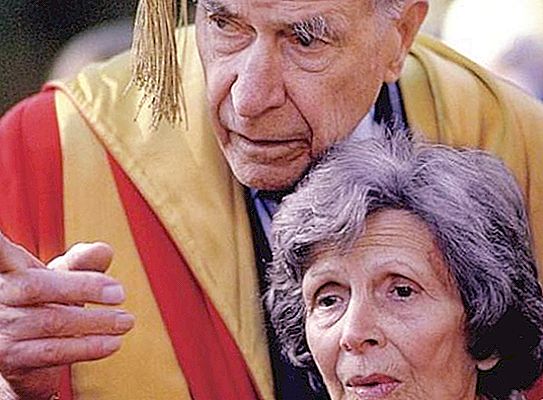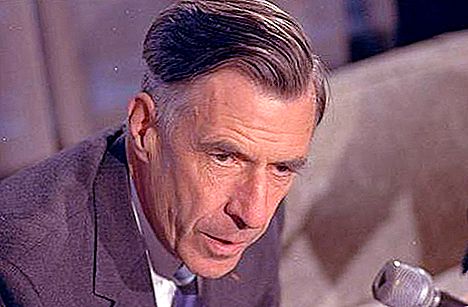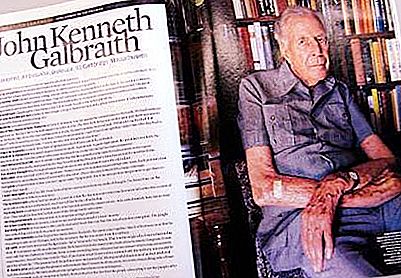Galbraith John Kenneth is a Canadian (later American) economist, civil servant, diplomat and supporter of American liberalism. His books were best sellers from the 1950s to the 2000s. One of them is the Great Collapse of 1929. John Kenneth Galbraith topped the list of best-selling authors again in 2008, after the onset of the global financial crisis. In 2010, many of the scientist's works were reprinted under the editorship of his son.
Galbraith's views as an economist were greatly influenced by the ideas of Trostain Veblen and John Maynard Keynes. The scientist worked almost all his life (more than 50 years) at Harvard University. He has written about 50 books and thousands of articles on various topics. Among his most famous works is the trilogy on economics: “American Capitalism” (1952), “The Society of Abundance” (1958), “The New Industrial State” (1967).
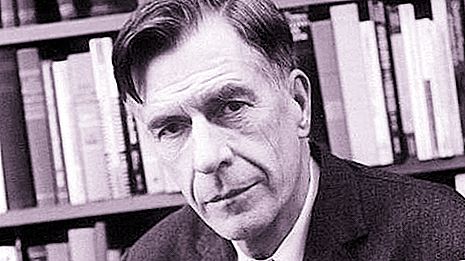
John Kenneth Galbraith: biography
The future famous economist was born into a family of Canadians of Scottish descent. He had two sisters and one brother. His father was a farmer and a school teacher, his mother a housewife. She died when Galbraith was only 14 years old. In 1931, he received a bachelor's degree in agriculture, then a master of science and defended his Ph.D. in the same field. From 1934 to 1939, he worked (intermittently) as a teacher at Harvard University, from 1939 to 1940 - at Princeton. In 1937 he received American citizenship and a scholarship to Cambridge. There he met the ideas of John Maynard Keynes. Galbraith’s political career began as a consultant to the Roosevelt administration. In 1949, he was appointed professor of economics at Harvard University.
Galbraith John Kenneth, or simply Ken (he did not like his full name), was an active politician, supported the Democratic Party and worked in the administrations of Roosevelt, Truman, Kennedy and Johnson. He also served as ambassador to India for some time. He is often called the most famous economist of the second half of the XX century.
As a theorist of institutionalism
Galbraith John Kenneth was a supporter of the so-called technocratic determinism. Working in the Kennedy administration, he played a significant role in developing the “new frontiers” program. On the basis of technical and economic factors of production, he distinguished two different systems: market and planning. The first includes millions of small firms that work in various industries. The planning system consists of thousands of large corporations that produce most of the goods and services. The latter exploit small firms, which transfer a significant part of the costs of large businesses. Galbraith considered the so-called "mature" corporation to be the main element of the planning system. By its nature, it should be a technostructure that brings together scientists, engineers, specialists in the field of trade and public relations, lawyers, intermediaries, managers, administrators and other specialists and monitors the preservation and strengthening of the organization's market position.
About the American economy
In 1952, Galbraith John Kenneth began his famous trilogy. In the book American Capitalism: The Concept of the Warring Force, he concluded that the economy is driven by the combined efforts of big business, major unions, and government. Moreover, this state of affairs, according to the scientist, was not always characteristic of the USA. He called the opposing force the actions of industry lobby groups and unions. Before the Depression of 1930-1932 big business controlled the economy relatively freely. In his 1929 Great Crash, he describes the famous fall in Wall Street stock prices and how markets gradually receded from reality during a speculative boom. In the book, The Society of Abundance, which also became a bestseller, Galbraith argues that in order to become a successful state after World War II, the United States must invest in road construction and education, using funds received from taxpayers. He did not consider the increase in material production as evidence of the health of the economy and society. The views of the scientist significantly influenced the policies pursued by the Kennedy and Johnson administrations.
The concept of a new industrial society
In 1996, Galbraith was invited to the radio. In six programs, he was supposed to talk about the economics of production and the impact of large corporations on the state. The book "New Industrial Society John" Kenneth Galbraith in 1967 released based on these programs. In it, he revealed his method of analysis and argued why he believes that perfect competition is suitable only for a small number of sectors of the American economy.
About financial bubbles
Galbraith's works are devoted to many questions. In A Brief History of Financial Euphoria, written in 1994, he explores the emergence of speculative bubbles over several centuries. He believes that they are the result of a free market system, which is based on "mass psychology" and "selfish interest in mistakes." Galbraith believed that "… the world of finance invents the wheel again and again, often even less stable than the previous version." Interestingly, the global crisis of 2008, which took many economists by surprise, confirmed many of his views.
Heritage
John Kenneth Galbraith considered macroeconomic analysis as an additional tool, he believed that neoclassical models often do not reflect the real situation. All the basic theories of the scientist are connected with the influence of large corporations on the market. Gabrate believed that it was they who set prices, not consumers. He advocated government control where he was needed. In the "Society of Abundance, " Galbraith argues that the methods of classical economic theory were only effective in the past, in the "age of poverty." He advocated artificially reducing the consumption of certain goods through a taxation system. Galbraith also proposed a program of "investing in people."
Criticism of theories
Galbraith John Kenneth, whose main ideas determined the bulk of the development of the American economy, was an opponent of simplified neoclassical models explaining business processes. Nobel laureate Milton Friedman made harsh criticisms of the scientist's views. He claimed that Galbraith believes in the superiority of aristocracy and paternalistic power and denies ordinary consumers the right to choose. Paul Krugman did not consider him a scientist. He claimed that Ken writes non-fiction works that provide simplified answers to complex questions. Krugman regarded Galbraith as a "media person" rather than a serious economist.

